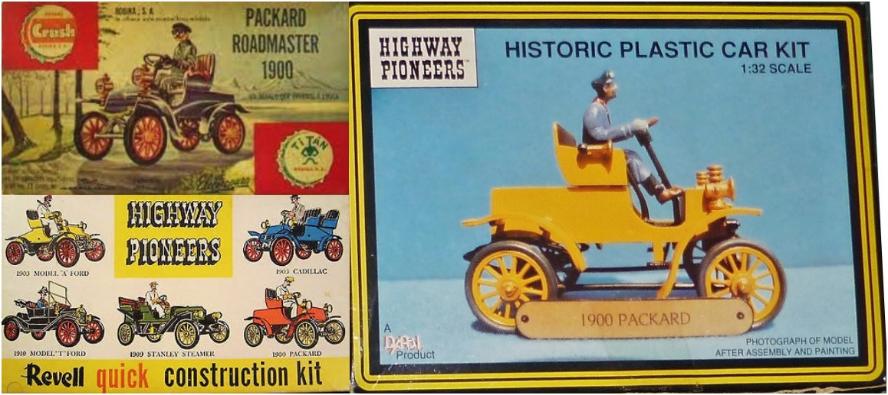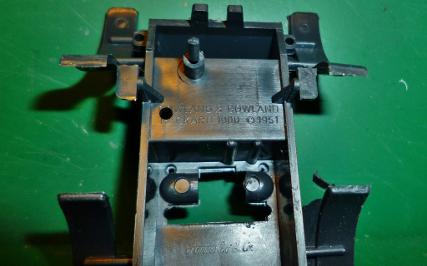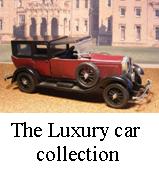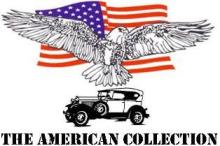
1900 Packard Model ‘B’ automobile.
Alexander Winton created one of the earliest motor car building companies in the United States. But when Winton sold one of his cars to James Ward Packard in 1899, he inadvertently created one of the best automobile firms in the world.
Legend has it James Packard, being a mechanical engineer, was disappointed with his purchase and went to Alexander Winton with a list of suggestions for improving the Winton car, and, in a conversation (nee Argument) repeated later between Lamborghini and Ferrari, Winton told Packard if he could do better then, “build a better car”.
Packard, like Lamborghini, did so; and to great effect. The Packard Motor Car Company would go on to manufacture elegant, reliable, high-quality automobiles with exceptional attention to detail and innovative features. They were so good that the firm’s sales slogan for years was simply: "Ask the man who owns one".
However, every firm has to start somewhere and in the case of Packard it was when James Ward Packard and his brother William Dowd Packard set to work to design and built a single cylinder prototype car; the first of which was finished on the 6th of November, 1899. The Packard brothers then engaged with George Lewis Wiess, one of the Winton motor company stockholders, and built a factory on Dana Street Northeast in Warren, Ohio, where they went into production with the Packard Model ‘B’ automobile. All the early Packard cars built by the Ohio Automobile Company, in Warren between 1899 and 1903 were single-Cylinder cars.
After the first 400 cars were built a new factory in Detroit was finished and production left Ohio. This prompted a change of company name and the Packard Motor Car Company was born on the 2nd of October, 1902. Although the Packard name has now faded into history it once held a high position amongst America’s premier luxury automobile firms.
Model ‘A’ Packard of 1899 had a 9hp single cylinder engine with a cast-iron block. It had several advanced features such as automatic spark advancement with a rotating governor, float-feed carburettor, and a recirculating water pump. The car had 2-speed planetary gearing. The first one was sold to a Mr. George Kirkham of Warren, Ohio.
The model ‘B’ of 1900 was displayed at the New York Automobile Show in November, 1900, and remained in the catalogue through 1901 as a lesser powered model to the new Model ‘C’. The Model ‘B’ was quite similar to the Model ‘A’ with the same 9hp, 143cubic-inch single cylinder cast-iron block engine and tiller steering arm to which a bulb horn was fitted. But, the speed control now moved to a foot pedal rather than the hand lever throttle control of the model ‘A’. A foot chime was also provided and foot and lever breaking.
The first Packard Model ‘B’ was completed in the spring of 1900 and by the end of the year 49 cars of this type had been built. The single bench seat roadster was the only model available at a cost of $1200, but, as an optional extra, a second rear facing bench seat behind the driver’s position could be had. The car had just one head lamp mounted centrally on the main transvers leaf spring suspension mount.
Packard employee Henry Schryver, also gave personal instruction on how to operate and maintain their new car; a far cry from today’s world where the purchaser goes into the showroom, signs a few forms then drives away!
Where are all the Packard Model ‘B’s now? Well, there are two in the US, one is preserved in the Packard Laboratory and the other is in the Packard Museum in Warren, Ohio. Otherwise, they seem to be very thin on the ground.



















Our model is a detailed version of the Highway Pioneers 1/32nd scale kit as released by Dapol, kit #C115, in the 1990s. The kit is the same product as it was first released in 1951 by Gowland & Gowland as part of the original Highway pioneers set. Indeed, the main body part proudly proclaims the copyright of 1951 moulded on its inside.
Like all the Highway Pioneers kits this one has been re-released many times under a multitude of guises. Revell, Lodela/Orange Crush (Mexico), Trol, Premier and Dapol as a quick list. Revell have released the kit several times including one release actually titled “Highway Pioneers 1900 Packard - Boy Scouts of America Edition, kit # H-33”. Interestingly the kit has had no alterations of any sort in its 70 years of life. For much of the time it doesn’t seem to have had an actual kit number visible on the box either. The same is true of the Highway Pioneers series generally making them quite unusual in a world where most kits evolve and are developed to gain the maximum monetary value, a number of kit numbers then becoming associated with the primary model.
The kit is a very simple item with an awful caricature of a figure that detracts from, rather than adds to, the overall image of the vehicle.







The model was built by Ian during 2021-22 being finished in the January 2022 along with a new display cabinet created to look like a smaller version of our well known 1/24th scale display from the models. Ian’s initial desire to build the model straight from the box soon disappeared once he did a little research. The kit has several flaws but the worst, and one that had to be addressed, was the wheels. The kit has artillery spoke wheels and all photos of the Model ‘B’ Packard show wire wheels fitted. So, Ian scratch built a set of wire wheels for the car. Not perfect, but certainly closer to the real thing than the kit wheels were. For information on making wire spoke wheels see our projects & articles pages.
Ian then thought that other details would have to be addressed too. Details such as the steering system. The kit’s column and steering wheel were dispatched to the spares box while a more accurate tiller steering system was made. The Tiller on the real car hinges up to allow easier entrance and egress from the vehicle, so was left in the up position. Detailing then followed on to the underside of the car and with the steering components of the front axle all needing to be scratch built.
More details like a flywheel and chain drive were added to give the curb-side model a little more reality, linked up to the modified rear axle and scratch built contracting band rear brake. The side rails of the Model ‘B’s metal chassis were then converted to the earliest version of ‘A’ frame axle location rather than the parallel front to rear rails, some additional locators for the diff’ were also scratch built and fitted to the chassis.
Other work involved by cutting off the moulded-on wings and fabricating new stays to fit the wings more in keeping with the real cars. In similar fashion the single headlamp was drilled out to make a bowl and a lens added before mounting it onto scratch-built fittings on the central front transverse spring clamp. Wire edging rails were made for the front bodywork (presumable there to carry small parcels, wicker baskets, etc).
The trickiest thing to do was mark out all the fancy scrollwork of two-tone body colour. The process is to paint the lighter colour all over the model then to seal it with several coats of clear. After all the paints have had plenty of time to cure then the masking up can begin. After the darker shade has been applied and the masking removed some careful decaling hides any rough edges to the paint join line. Gold pinstripe decals from Kangaroo decals of Australia, set # 219, took care of that but at the cost of over 48hrs combined time spent just applying decals, section by section.
The colour scheme was inspired by a photograph found on the internet which I can’t think was a ‘standard’ colour scheme but certainly looks good and shows off the Packard as a luxury item. Although we can’t claim any authenticity to this scheme it looks much better than another black or red car, and, Packard was a luxury firm that did what the customer asked rather than sticking rigidly to its own colour range.
The model was primed with Alclad 2 primers applied with an airbrush. The main body colours were also airbrushed on with the paints coming from the Zero Paints range. Other paints that were brush applied for the details and textures came from the Deco-Art, Citadel, Humbrol and Revell ranges of acrylic paints.
The wire used for detailing the model came from scraps of household wire so no need for expensive aftermarket products either.

